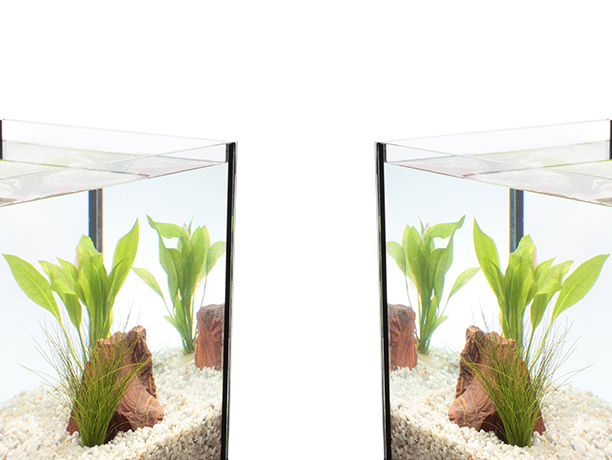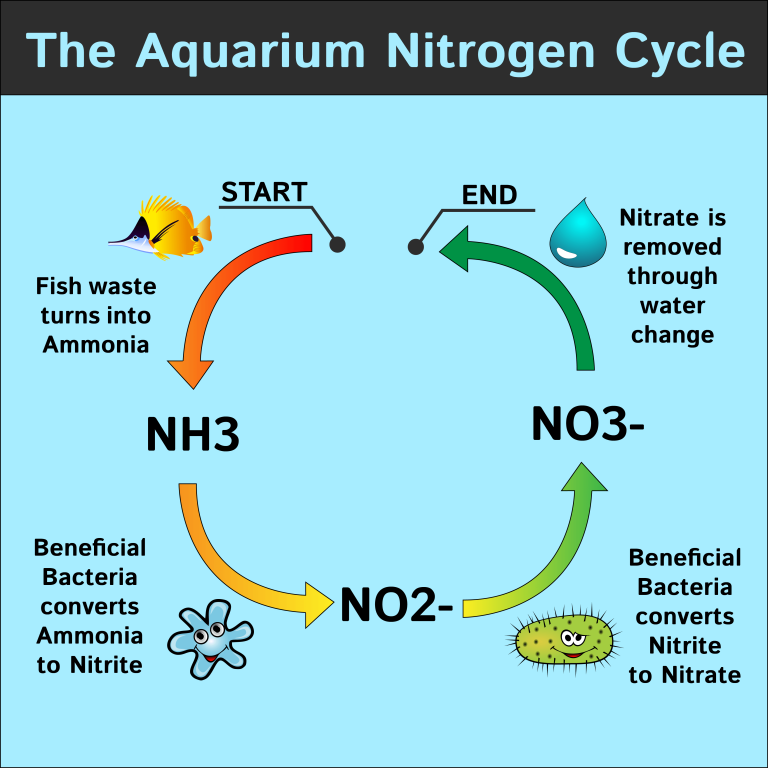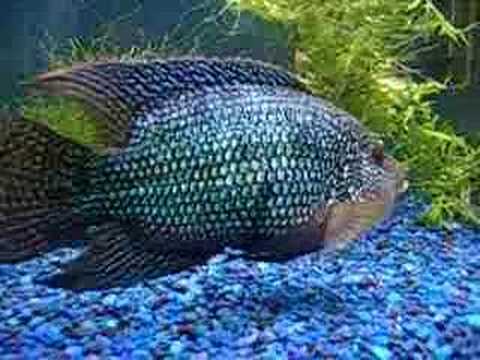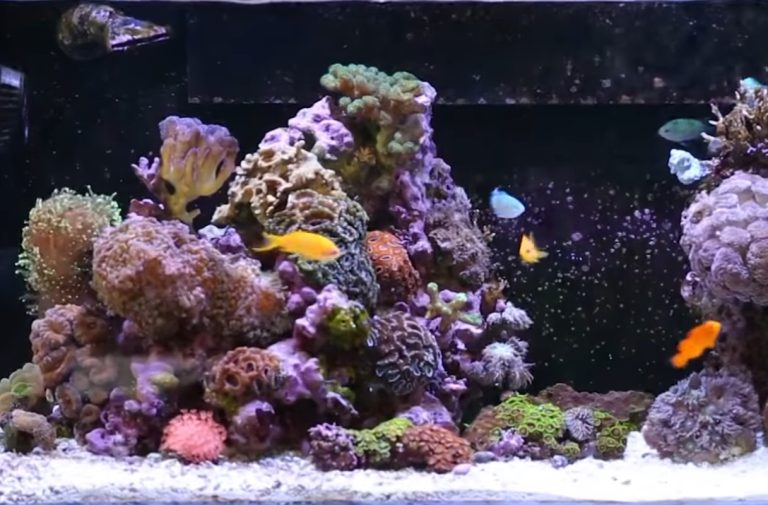Troubleshooting Tips for Dropping Fish Tank Water Levels
If your fish tank water level is dropping, it could be due to evaporation or a leak in the tank. In either case, it is important to determine the cause and take action to prevent harm to your fish and damage to the tank.
Fishkeeping can be a relaxing and fulfilling hobby, but maintaining a healthy aquatic environment for your finned friends requires some effort. One issue that may arise is a dropping water level in your fish tank. While a small amount of evaporation is normal, a sudden or significant drop in the water level may indicate a leak in your tank or a malfunction with your filtration system.
In this article, we will explore the possible causes of a dropping water level in your fish tank and provide tips on how to address the issue.

Credit: www.amazon.com
Understanding The Causes Of Dropping Water Levels In Fish Tanks
Seeing that the water level in your fish tank is decreasing is a sign that there’s something wrong with your aquarium. Although fluctuating water levels are common in fish tanks, it could be a warning sign of an underlying issue.
Before you start to panic, it’s crucial to understand the causes of dropping water levels in fish tanks. This information can help you address the problem and ensure the survival of your fish and other aquatic life.
Common Causes Of Dropping Water Levels In Fish Tanks
Several factors can contribute to dropping water levels in fish tanks. Here are the most common causes:
- Evaporation: Water in your fish tank evaporates, and the level drops gradually because of heat, light, and airflow.
- Leaks: A leaky tank or damaged hose, filter, or pump can lead to a significant drop in water levels.
- Splashing: Splashing caused by bubbles, fountains, or other decorative objects could lead to water displacement, resulting in a drop in water levels.
- Overfilling: Overfilling your tank with a considerable amount of water can also cause it to shift, leading to a decrease in water levels.
The Impact Of Low Water Levels On Fish And Other Aquatic Life
Low water levels can have a considerable impact on the well-being of fish and other aquatic life. Here are some of the effects:
- Lack of oxygen: A low water level means less surface area available for oxygen to dissolve, which can cause oxygen depletion. This can be fatal to fish and other aquatic life.
- Changes in water quality: Low water levels can cause fluctuations in ph, salinity, and other water parameters, which can be harmful to fish and other aquatic organisms.
- Stressful environment: An environment with low water levels can make fish restless, leading to loss of appetite, weaker immune systems, and susceptibility to disease.
To prevent low water levels in your fish tank, it’s essential to monitor water levels regularly and identify any contributing factors. Addressing these issues can ensure that you maintain a healthy and thriving aquatic environment for your fish and other aquatic life.
Remember always to keep an eye out for changes in water levels in your fish tank and take prompt action to prevent any adverse impact on the aquatic life.
Assessing And Managing Water Evaporation In Fish Tanks
Fish tanks are a popular addition to many homes, providing a relaxing and entertaining atmosphere. However, as with any pet, taking care of fish involves monitoring their environment. One issue that can arise with fish tanks is a drooping water level.
To better understand the causes of this problem and how to treat it, we will focus on assessing and managing water evaporation in fish tanks.
Identifying Signs Of Water Evaporation
Before we can determine how to address the issue of lower water levels in your fish tank, it is essential to recognize the signs of water evaporation. Here are some telltale indications that your aquarium water is evaporating:
- The water level is decreasing steadily.
- The temperature of your aquarium water is gradually increasing.
- Your fish seem to be gasping at the water surface.
- Salt deposits are found on the glass around the top of the aquarium.
Factors That Influence The Rate Of Water Evaporation In Fish Tanks
Water evaporates in every aquarium, but the rate at which it occurs depends on several factors. Let us discuss these factors which affect the rate of evaporation:
- Surface area: The larger the surface area of the aquarium, the more water it will lose through evaporation.
- Lighting: High-intensity lighting will heat the water and boost the evaporation rate.
- Humidity: The humidity in the surroundings impacts the rate of water loss.
- Filters and aerators: The increased water oxygenation that these devices provide speeds up the water evaporation process.
- Room temperature: The temperature of your room has a significant impact on the rate of evaporation.
Managing Water Evaporation In Fish Tanks
Several steps can be taken to manage water evaporation in your fish tank. Here are some useful tips to manage evaporation:
- Cover the aquarium to reduce the surface area exposed to air. Mesh screen or glass tops can be purchased to help cover the tank. It also prevents dust and other particles from getting into the tank.
- Keep the lighting at a moderate intensity. Do not use high-intensity lighting straightaway.
- Run a humidifier to maintain the humidity level in the room.
- Use a heater to maintain consistent water temperature. A stable temperature reduces the rate of evaporation.
- If you have any power devices such as filters, lower the strength to slow down the water motion. This will help you decrease evaporation.
Water evaporation can cause water levels to drop in fish tanks, which can create problems for your fish’s health. By identifying the signs of water evaporation and controlling factors that contribute to it, you can keep your aquarium healthy and beautiful for your fish to enjoy.
Addressing Water Leaks And Seepage Issues In Fish Tanks
Are you noticing that the water level in your fish tank is dropping? This issue could be caused by water leaks or seepage. Addressing these problems is essential, as they can lead to various complications, including damage to your tank, harm to your fish, and unnecessary expenses.
We’ll look at some common sources of leaks and seepage, types of leaks that can happen in a fish tank, and tips for remediation and maintenance.
Identifying Sources Of Leaks And Seepage
The first step in addressing a leaking fish tank is to identify its cause. Sometimes, identifying leaks can be challenging, but with careful consideration, you can spot the culprit. Here are a few things you should consider:
- Check your fish tank surroundings: Sometimes, your fish tank may be sitting on an uneven surface, causing it to shift, and eventually lead to leaks. Check that your fish tank is sitting level on a steady base like a stand.
- Inspect aquarium equipment: Gaskets, seals, and hoses are some of the most typical culprits of leaks in a fish tank. Check all the equipment, including the powerheads, pumps, and filters, for leaks or signs of wear and tear.
- Keep an eye on the temperature: Extreme temperature changes or fluctuation between hot and cold temperatures can cause seals to loosen and eventually lead to leaks.
- Check for cracks: Inspect the aquarium glass, and pay particular attention to the seams. They can create leaks when cracked or compromised.
Common Types Of Leaks And Seepage In Fish Tanks
Leaking water from fish tanks can occur through a wide range of sources. Knowing the type of leak in your tank may help you find a solution to fix it. Here are some common places where leaks can happen:
- Pinhole leaks: These tiny holes on a fish tank can create small leaks that can grow significantly over time.
- Silicone leaks: In most fish tanks, silicone is used to join the seams. If a small crack or gap appears in this sealant, leaks can occur.
- Overflow leaks: If your fish tank overflows, water can seep into the place where the aquarium meets the base, leading to leaks.
- Plumbing leaks: If the plumbing that connects your fish tank becomes loose or damaged, then leaks may occur.
Remediation And Maintenance Tips For Addressing Water Leaks And Seepage
It’s essential to fix any leaks or seepage promptly, not only to prevent costly damages but also to maintain a healthy environment for the fish. Here are some tips to help you address the issue:
- Regularly inspect your fish tank: This will help you spot problems early and prevent significant damage.
- Clean the fish tank: Regular cleaning can help you spot existing or potential leaks.
- Monitor the temperature: Keep the temperature steady, as sudden temperature changes could cause cracks and leaks.
- Use quality equipment: Ensure that all equipment that comes into contact with water is of good quality, durable, and reliable.
- Fix leaks immediately: If you identify a leak, rectify it immediately. Fixing minor issues right away can prevent water damage and harm to your fish.
With these tips, you can eliminate leaks and seepage issues in your fish tank and ensure a comfortable and healthy space for your fish to thrive.
Investigating Water Overflow In Fish Tanks
Fish Tank Water Level Dropping
Have you ever noticed that the water level in your fish tank seems to be constantly dropping? Investigating water overflow in fish tanks may be the root cause of this problem. We will delve into the common causes of water overflow, prevention and control tips you can use to avoid the issue, and the effects of water overflow on fish and aquatic life.
Common Causes Of Water Overflow In Fish Tanks
There are a few reasons why a fish tank could be experiencing water overflow, including:
- Overfilled tank: If the water level in your tank is higher than recommended, it can spill over and cause water overflow.
- Faulty equipment: A broken pump or filter can cause water to circulate poorly, leading to an excess amount of water escaping from the tank.
- Clogged filter: A clogged filter can also interfere with proper water circulation, leading to overflow events.
- Poorly fitting lid: An incorrectly fitted lid may not provide adequate coverage for the tank and can cause water to escape.
Prevention And Control Tips For Water Overflow In Fish Tanks
To avoid water overflow in your tank, consider implementing the following tips:
- Use a water level indicator to determine the correct water level and avoid overfilling.
- Ensure your equipment is working properly and replace any faulty components immediately.
- Regularly clean or replace your filter to ensure it is functioning correctly.
- Replace or adjust the lid to ensure it fits appropriately, tightly covered tanks generally prevent water from escaping.
- Add an overflow box to catch excess water that can then be filtered back into the tank.
Addressing The Effects Of Water Overflow On Fish And Aquatic Life
Water overflow in a fish tank can have negative effects on aquatic life, including:
- Insufficient oxygen levels: As water flows out of the tank, it can reduce the oxygen levels in the water, leading to oxygen depletion and increased ammonia levels in the tank.
- Increased stress: Frequent overflow events can cause undue stress on fish, which can ultimately have a negative impact on their health and well-being.
- Contamination of aquarium water: Overflow can introduce harmful elements into the water, potentially leading to illness or other adverse effects on fish and other aquatic life.
In light of these effects, it becomes all the more crucial to take preventive measures to avoid water overflow in your fish tank.
By implementing the right prevention techniques, you can help prevent water overflow events from occurring in your fish tank, safeguarding the health and wellness of your valuable aquatic life.
Frequently Asked Questions Of Fish Tank Water Level Dropping
Why Is My Fish Tank Water Level Dropping?
The water level in your fish tank might be dropping due to evaporation or leakage.
How Much Water Should I Add To My Fish Tank?
It is recommended to add fresh water equal to the amount that has evaporated daily.
How Can I Check For Leakage In My Fish Tank?
Inspect the tank thoroughly for any cracks, loose fittings, or damage. Check the surrounding area for wetness.
Can Low Humidity Cause Fish Tank Water To Drop?
Yes, low humidity can cause evaporation and hence a drop in fish tank water level. Increase humidity levels to prevent this.
Conclusion
As we conclude, it is vital to keep a close eye on the water level in your fish tank. It is essential to monitor the situation to avoid any potential harm to your fish. The fish tank water level dropping could have several reasons such as the use of a small filter, evaporation, or a leak.
Small adjustments in the daily aquarium maintenance routine can decrease the chance of causing harm to our little water friends, and you don’t have to break the bank. Remember to check the water level regularly, choose the right filter, conduct a thorough check for leaks, and refill the tank with suitable water to the appropriate level.
The key is to provide a comfortable and secure environment for our fish friends, and their wellbeing brings us joy as responsible fish owners.






